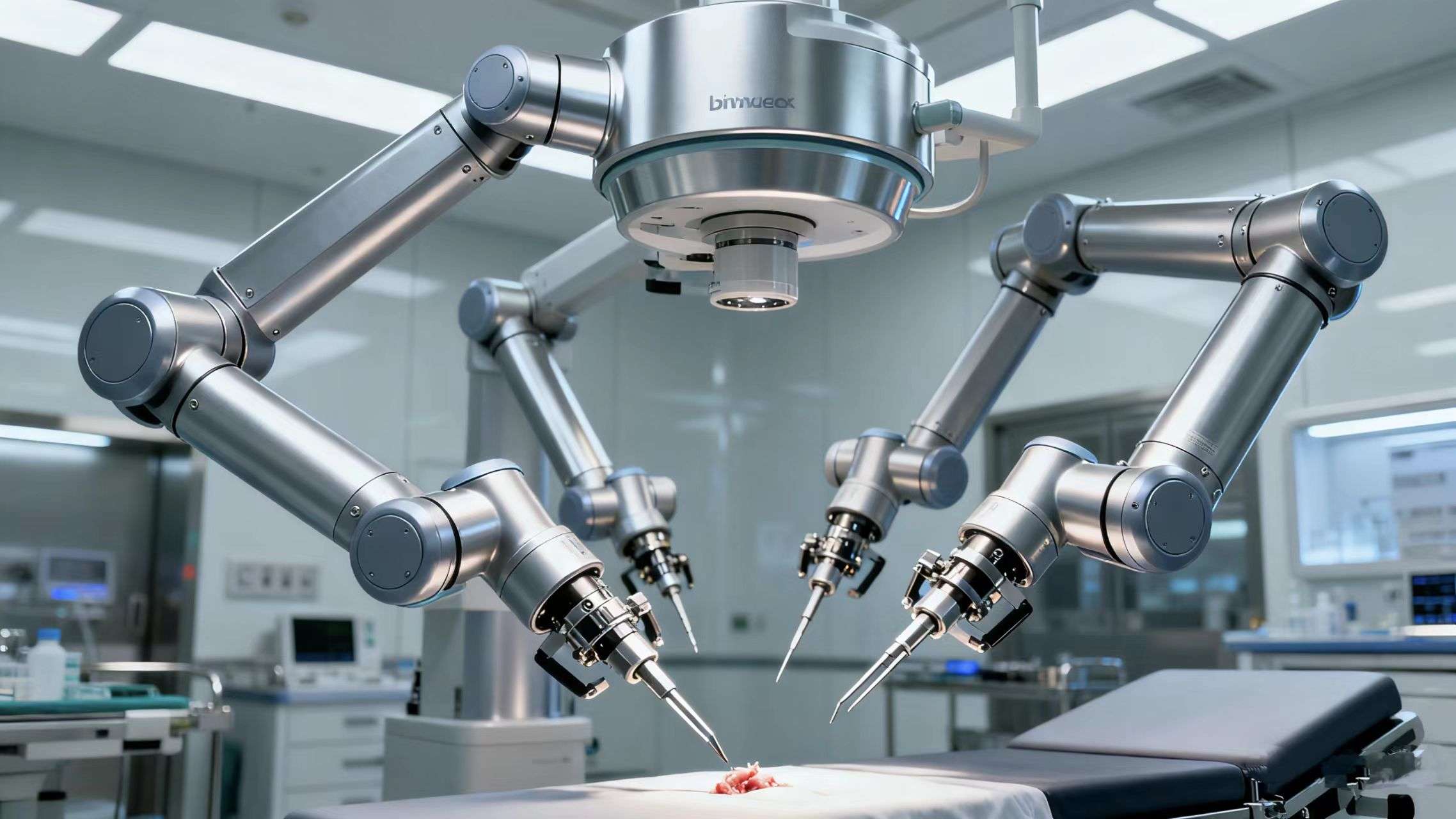
In the field of minimally invasive surgery,every micron matters.The“joints”of surgical robots—those highly complex,precision components that must work seamlessly together—are the core of their exceptional flexibility and stability.So,how are these key parts manufactured to meet and even exceed the reliability standards of human hands?The answer lies deeply rooted in the heart of modern manufacturing:CNC machining.
Where Does Precision Beyond Human Capability Come From?
The robotic arms of surgical robots need to perform precise movements such as rotation,deflection,and grasping.Their core components,such as connecting joints,micro gearboxes,and surgical tool actuators,have extremely high requirements for precision,lightweight,and biocompatibility.This is where precision machining technology truly shines.
In a highly specialized factory environment,CNC milling and CNC turning are the two core technologies for manufacturing these complex parts.Take the manufacturing of advanced titanium alloy minimally invasive instruments as an example.Titanium alloy,with its high strength,low weight,and excellent biocompatibility,is the ideal material for such applications.However,it is also a difficult material to machine.
CNC milling,through the high-speed rotation of precision cutting tools,gradually removes excess material from the titanium alloy blank,enabling the creation of extremely complex three-dimensional shapes and internal cavities that are impossible with traditional machining methods.CNC turning,on the other hand,is used for machining rotary parts that require extremely high roundness and smoothness,such as certain sleeves and connecting parts in robotic arms.An advanced multi-axis CNC machine can perform multiple operations such as milling,drilling,and tapping in a single setup,maximizing the integrity and ultra-high precision of the parts and eliminating errors that may arise from multiple setups.
Compliance:The Lifeline Beyond Precision
For medical device parts,precision is just the baseline,not the endpoint.Global market access,such as FDA(U.S.Food and Drug Administration)and CE(European Conformity)certifications,have strict regulations for the manufacturing process.This goes far beyond final product inspection;it covers a complete quality system from raw material traceability,machining environment control,tool path programming,to every machining parameter.
A reliable manufacturing partner must ensure that the entire CNC machining process takes place in a controlled environment.Workshop cleanliness,automatic compensation for tool wear,real-time machining monitoring,and a comprehensive traceability system are all essential parts of meeting FDA/CE compliance requirements.Each robotic joint part that is machined must have complete data records proving that every step from raw material to finished product complies with medical-grade quality standards.
A More Stable and Intelligent Future
Through the manufacturing revolution brought about by CNC machining,we can produce more optimized and lighter robotic arm joints.Lighter weight means lower inertia,resulting in faster,more precise,and lower energy-consuming robot movements.This unparalleled stability can filter out the natural tremors of a surgeon's hand,making surgical operations more precise and ultimately bringing patients treatments with less trauma and faster recovery.
In summary,the leap in surgical robot technology is not only a victory of software algorithms and mechanical design but also a result supported by cutting-edge precision machining capabilities.It is these titanium alloy parts,precisely programmed and machined in modern factories,that together form the core of medical robots that are more stable and reliable than human hands,continuously driving minimally invasive surgery towards a new future.